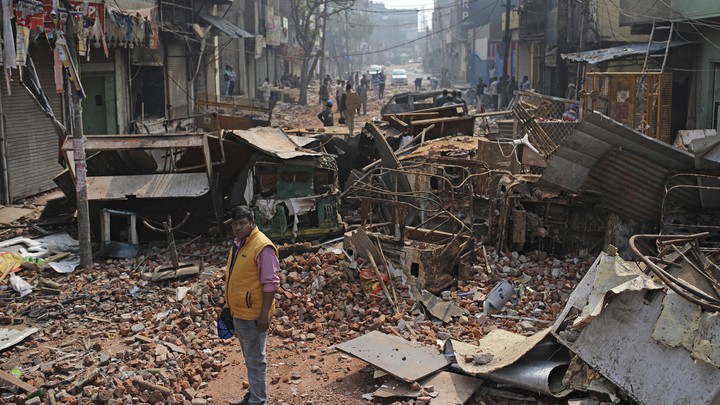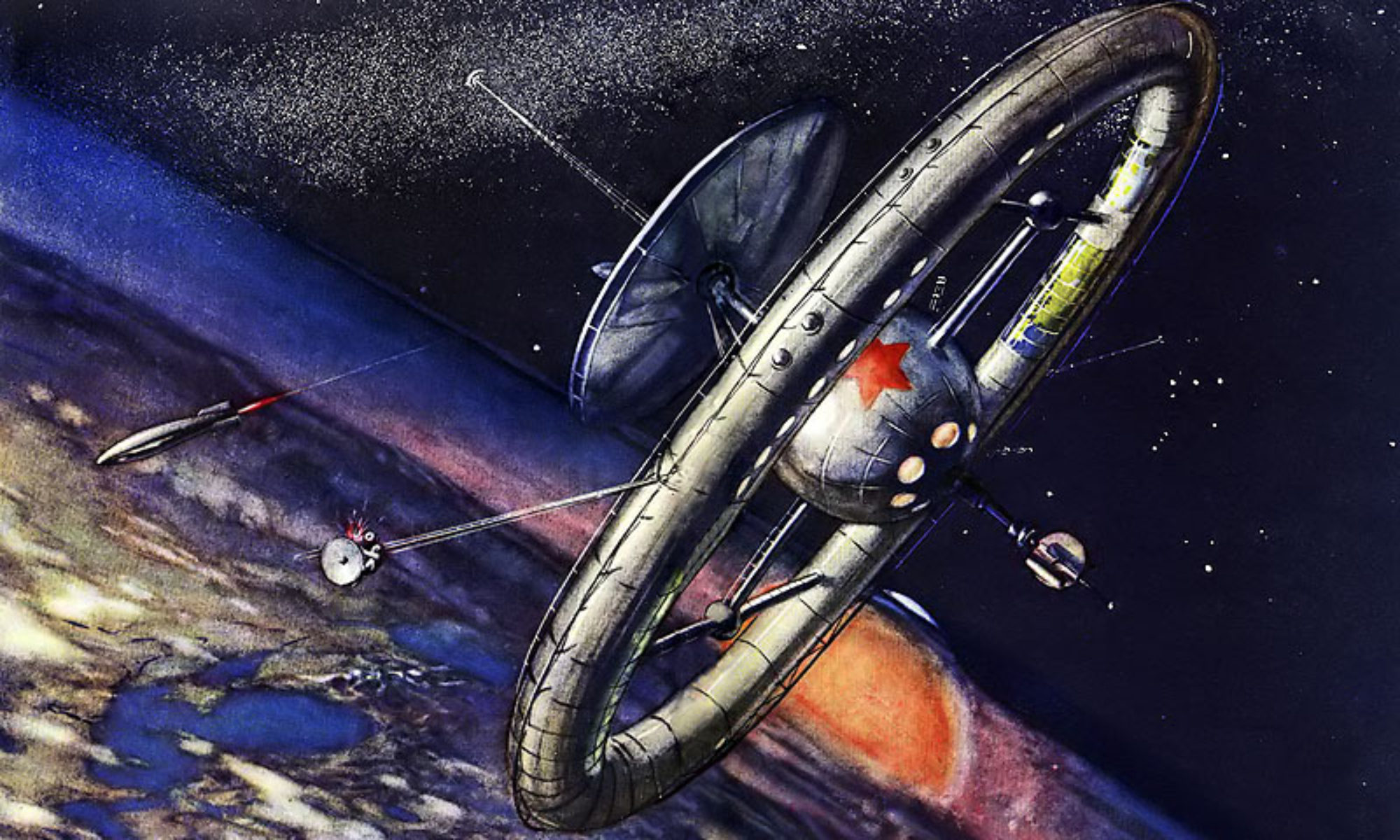Statement by By Zenab Ahmed, Rohith Krishnan, and Djamil Lakhdar-Hamina on the pogrom in India.

The Pogrom
Last week, Hindu nationalist mobs spent days ripping through the homes, businesses, and religious sites of Muslims in the slums of India’s capital city. Roaming gangs of young men with saffron marks on their foreheads shouted “Jai Shri Ram!” while the police looked on without a word. This isn’t new – India has faced outbreaks of violence, between Hindu and Muslims, as well as organized massacres of minority groups by mobs in the past. Yet the pogrom in New Delhi takes place in an alarming context. India has been electrified by protests, sit-ins, and intense struggle as a result of a new citizenship law passed by Modi’s ruling Bharatiya Janata Party (BJP). The law grants preferential citizenship terms to non-Muslim Indians, clearly discriminating against Muslims and other Indians who are not Hindu (including Sikhs and Christians). President Trump was on a tour of India, and meeting with the fiercely nationalist, and Hindu supremacist, Prime Minister Narendra Modi, with the aim of deepening ties on trade, security, and Anti-Chinese policy. Trump’s presence appears to have emboldened the crack-down on opposition to the law, with Modi himself taking three days to condemn the killings after they began taking place.
The Left must condemn last week’s sectarian bloodshed, which in four days led to dozens of deaths and hundreds of injuries. Concrete steps must be taken to prevent such violence from growing and spiraling into a nationwide pattern of ‘killing waves’. If Modi and the BJP are not removed from power, and if the ideology of Hindutva (social organizing based on Hinduism as a unifying force) is not defeated, India will spiral into a pattern of increasingly far-right national governance, complemented by street violence, that may eventually culminate in ethnic cleansing and genocide. The BJP is pushing India in an increasingly fascistic direction, and there can be no doubt that the brutal confidence on display in India will feed into the strength of the far-right worldwide. There is no room for complacency, anywhere.
Origins of the BJP
First, it is important to acknowledge the BJP’s roots as a party, and the reasons why it has now been able to achieve popular and electoral success. Modi’s rise was not inevitable. Indeed, Hindutva, and its major proponents in the right-wing paramilitary volunteer organization Rashtriya Swayamsevak Sangh (RSS) and a broader constellation of Hindutva organizations called the Sangh Parivar, largely didn’t have widespread appeal until political and economic crises in the 1970s. The Hindu Mahasabha/Jan Sangh, the torch-bearer of Hindu nationalism in the decades after independence, never controlled a state government, nor did it maintain a notable parliamentary presence. Nevertheless, it was able to develop a strong cadre base, which would be key to its reversal of fortune. The Emergency of 1977, during which the Congress Party’s Indira Gandhi briefly assumed near-dictatorial powers, allowed Hindutva to rebrand itself as a force for democracy and ‘ordinary people’ against the corrupt excesses of Congress. During this period, the Economist described the Sangh as “the world’s only non-leftist revolutionary force.”
The Emergency greatly boosted Hindutva’s legitimacy, but not its political strength, although regional political forces such as Shiv Sena borrowed from its ideas to maintain consensus for conservative politics, and decimate both the urban labor movement and parliamentary left. During this period, Hindutva was gaining increasing appeal outside of the RSS’ traditional base in the domestic merchant class, as well as among expatriate communities that began supporting it financially. Expats played a critical role in cementing, and broadening RSS patronage to various sections of the Indian bourgeoisie. The BJP was formed by the RSS as an independent political wing in 1980, in order to exploit a heightened sectarian and ethnic supremacist climate, stoked in no small part by Congress, whose anti-Sikh pogroms following the assassination of Indira Gandhi still mark the most intense act of sectarian violence in post-independence India. After 1989, the BJP abruptly rose to prominence in national politics, expanding from the “Hindi Belt” and exploiting an ongoing economic crisis that culminated in a 1991 liberalization of the economy. The BJP campaigns of the late 1980s and early 1990s centered explicitly on Hindutva, most prominently the Ram Janmabhoomi campaign to build a Ram temple in Ayodhya, which led to the destruction of the Babri Masjid in 1992. In 1996, the BJP briefly formed a national government, which collapsed in a matter of weeks, only to come into power again from 1998 until 2004.
Until the mid-2000s, the Sangh Parivar continued to be defined by an upper-caste vote bank. Following their 2004 loss, Hindutva groups managed to expand outwards, at the same time that they got increased financial support from a bourgeoisie disillusioned with Congress. During its period in opposition, the BJP moderated its Hindutva rhetoric, shifting to a more developmentalist approach, and in due course, brought Narendra Modi to the fore as party leader. Modi himself is a former RSS cadre who takes pride in his humble origins as a tea seller and was assigned to the BJP in 1985. He was the Chief Minister of Gujarat in 2002 during a campaign of major ethnic cleansing in the state, which led to him being denied a U.S. diplomatic visa in 2005. As Chief Minister of Gujarat, Modi oversaw the so-called “Gujarat Model” of development, characterized by the extensive investment in urban areas coupled with strict austerity. While Gujarat’s public goods and rural infrastructure crumbled, investment expanded exponentially, the BJP focusing upon connections to the news media and telecommunications.
The BJP successfully passed itself off as a different party than the violent communalist organization of the 1990s. Modi was elected Prime Minister in 2014, and by 2016, the party had taken back control of several state governments on a platform of development and anti-corruption. The BJP also established a unit for social media, informally known as their “IT Cell,” which capitalized on the spread of internet access and mobile phones to centralize and rationalize their political messaging. Since that time, these accounts have been used to coordinate lynch mobs, incite riots, and create what can only be described as an alternative reality for many BJP supporters. Since Modi’s developmentalism has largely withered on the vine, with sluggish growth, rising food prices, and the state dealing a crippling blow to its own economy through demonetization, social media radicalization along with an aggressive foreign policy has become extremely important. Following reelection in 2019, the BJP has turned up the communal heat, revoking Jammu and Kashmir’s statehood, creating the largely undiscussed National Register of Citizens, and passing the Citizenship Amendment Act. The party will continue to get more violent, along with India at large.
Statement of Condemnation, Call to Arms:
As communists, in such a situation, we stand by the victims of the police and the pogroms, we condemn class-traitorous enemies of the working-class, and we only express solidarity to the working-class victims. To see an example of a failure to do this, one should read the statement of the Communist Party of India (Marxist) in which they ask to meet with the notoriously bigoted home minister Shir Amit Shah, having the gall to ask why he didn’t intervene sooner to stop the violence. This vacillation is shameful. Those in the non-Indian Left must condemn, and take seriously India’s increasingly fascistic politics on the national and street levels with the harshest possible language and maximal contempt for state forces. The BJP is successfully instituting genocide and ethnic cleansing on a national scale, achieving the Sangh Parivar’s vision of an India violently purged of Islam, Communism, and other ‘foreign influences.’
The Left within must continue to push for national protests, and global acts of solidarity, to highlight Modi’s mismanagement of the economy and India’s need for deep structural change. While the removal of Modi and the BJP wouldn’t solve the heart of the problem (which is the capitalist system and the continued strength of British imperial structures in the country) it would certainly defuse the situation and slow the pace of mass killing. Otherwise, like Nazi Germany before it, India is likely to face pogroms like those which have taken place in New Delhi on a regular scale.
Concretely, what is demanded by the situation is the strategy of the United Front. All workers, peasants, and Muslim organizations dedicated to defense, the defeat of Hinduvata, and a future of sanity, reason, and good-will, must band together politically. For the most immediate threat, pogroms, it is time to start taking self-defense seriously. Different organizations and communities must exchange information and be there for one another, fighting back against slaughter and reaction. But more will be needed, as a successful and united front of the left must find a way to dislodge the RSS-BJP ideology from its mass basis. If that does not occur there is no knowing the dark outcome of the decade. Those suffering because of that same movement of Hindutva must somehow find a place, a movement to band together , both in the streets and at the ballot box, and those weaker elements recruited by Hindutva must be won away and given a new political home. It is unclear how this may happen, in India’s increasingly bleak national landscape, but surrender isn’t an option.
The international left must take what is occurring in India seriously. The global right-wing is not dead or defeated, and though historical analogies may be stretched, the cost of not seeing the proper extent could be fatal. After all, idiotic theories propounded in the 1930s by Communist officialdom predicted that Mussolini and Hitler were just a passing phase.

133 Replies to “The Situation in India and How it Has Gotten Here”
Comments are closed.